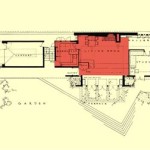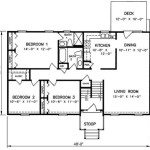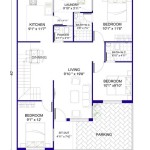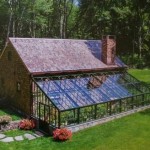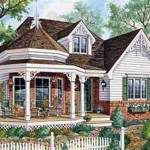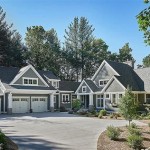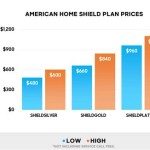Home Plans With Garage Under House: Maximizing Space and Functionality
Home plans featuring a garage under the house, often referred to as a tuck-under garage, represent a design solution that addresses various challenges, particularly in areas with sloped lots, limited land availability, or specific architectural preferences. This architectural approach integrates the garage seamlessly into the home's overall structure, offering numerous advantages in terms of space utilization, cost-effectiveness, and aesthetic appeal. The design necessitates careful consideration of structural integrity, drainage, and accessibility to ensure optimal functionality and a comfortable living environment.
The primary motivation behind incorporating a garage under the house stems from the desire to maximize the use of the available land. In urban settings where lot sizes are restricted, or in areas with significant topography, a traditional detached garage may not be feasible or aesthetically desirable. By placing the garage beneath the main living areas, the homeowner can preserve valuable yard space, allowing for landscaping, outdoor recreation, or other amenities. This design is particularly effective on sloping lots, where the natural grade can be leveraged to provide direct access to the garage without requiring extensive excavation or retaining walls.
Beyond space optimization, financial considerations often play a crucial role in the decision to opt for a home plan with a garage under the house. Combining the garage and the main residence under a single roof can potentially reduce construction costs compared to building a separate structure. The shared foundation and roof system eliminate the duplication of materials and labor, leading to potential savings. Furthermore, integrating the garage into the home's design can improve energy efficiency by providing a buffer zone that insulates the living spaces above from extreme temperatures.
Home plans incorporating a garage under the house cater to a diverse range of architectural styles, ranging from contemporary designs to traditional aesthetics. The garage can be discreetly integrated into the overall façade, maintaining the curb appeal of the home. Exterior finishes can be seamlessly matched to the rest of the house, creating a cohesive and unified appearance. Thoughtful landscaping and strategic placement of windows and doors can further enhance the visual integration of the garage, making it an unobtrusive and aesthetically pleasing element of the home's design.
Addressing Sloping Lots and Challenging Topography
Sloping lots present both challenges and opportunities in home construction. Home plans with a garage under the house are particularly well-suited for these types of properties. The natural slope can be used to create a driveway that leads directly into the garage, often eliminating the need for extensive grading or terracing. This approach minimizes site disturbance, reduces erosion potential, and preserves the natural beauty of the landscape. The garage can effectively serve as a retaining wall, stabilizing the hillside and preventing soil movement.
Furthermore, the placement of a garage under the house on a sloping lot can create opportunities for walk-out basements or additional living space on the lower level. The elevation difference allows for natural light and ventilation in the basement, transforming it from a dark and damp space into a functional and comfortable area. This added square footage can be used for recreational rooms, home offices, guest suites, or storage, significantly increasing the usable living space of the home.
In regions prone to heavy rainfall or snowmelt, proper drainage is paramount when designing a garage under the house on a sloping lot. Effective drainage systems are essential to prevent water from accumulating around the foundation and potentially seeping into the garage or basement. This includes the installation of gutters, downspouts, French drains, and proper grading to direct water away from the house. Waterproofing the foundation walls is also crucial to protect against moisture intrusion and prevent structural damage.
Accessibility is another important consideration when building a home with a garage under the house on a sloping lot. The driveway should be designed with a gentle slope to ensure safe and easy access for vehicles, especially during inclement weather. Adequate lighting along the driveway and around the garage entrance is essential for visibility and security. In some cases, heated driveways may be considered to prevent ice buildup and ensure safe passage during winter months.
Optimizing Space and Functionality in Compact Designs
In urban areas and other environments with limited land availability, maximizing space is a primary concern for homeowners. Home plans with a garage under the house offer an efficient solution for optimizing space in compact designs. By eliminating the need for a separate garage structure, valuable yard space is preserved. This allows for the creation of outdoor living areas, gardens, or play areas for children, enhancing the overall livability of the home.
The interior layout of a home with a garage under the house can be designed to maximize functionality and convenience. Direct access from the garage to the main living areas can be incorporated, allowing for easy unloading of groceries, transferring of items, and protection from the elements. A mudroom or entryway adjacent to the garage can provide a transition zone for storing shoes, coats, and other outdoor gear, helping to keep the main living areas clean and organized.
Vertical space utilization is also important in compact designs with a garage under the house. Tall ceilings in the garage can provide ample space for storage shelves, overhead storage racks, or even a car lift. This allows for efficient organization and storage of tools, equipment, and other items, maximizing the usable space within the garage. The area above the garage can be utilized as a portion of the main living area if desired, to enhance a compact design.
In some cases, the garage can be designed as a multi-purpose space, serving not only as a parking area but also as a workshop, hobby room, or storage area. Proper ventilation and lighting are essential for these types of multi-functional garages. Electrical outlets and workbenches can be installed to accommodate various tasks and activities. With careful planning and design, the garage can be transformed into a versatile and functional space that meets the specific needs of the homeowner.
Structural Considerations and Building Codes
Designing and constructing a home with a garage under the house requires careful attention to structural integrity and adherence to building codes. The garage essentially forms a structural base for the living spaces above, so it must be engineered to withstand the weight of the house and resist lateral forces from wind and earthquakes. Proper foundation design, wall construction, and roof support are crucial for ensuring the stability and safety of the structure.
The foundation walls of the garage must be designed to withstand the lateral pressure of the surrounding soil, especially in areas with high water tables. This may require the use of reinforced concrete walls or other specialized construction techniques. Waterproofing the foundation walls is essential to prevent moisture intrusion and protect against structural damage. The foundation should be designed by a qualified structural engineer to ensure that it can safely support the weight of the home and resist the forces of nature.
Fire safety is another important consideration when designing a home with a garage under the house. Garages typically contain flammable materials, such as gasoline, oil, and chemicals, which pose a fire hazard. Building codes often require the installation of fire-rated walls and ceilings between the garage and the living spaces above to prevent the spread of fire. Smoke detectors and carbon monoxide detectors should be installed in both the garage and the living areas to provide early warning of potential hazards.
Ventilation is also important in a garage under the house to remove fumes and odors from vehicles and other equipment. Proper ventilation can prevent the buildup of carbon monoxide and other harmful gases, ensuring the health and safety of the occupants. Building codes may require the installation of exhaust fans or other ventilation systems to ensure adequate air circulation. The specific building code requirements will vary depending on the location and the local regulations.

Hillside House Plans With Garages Underneath Houseplans Blog Com

4 Bedroom Contemporary Drive Under Style House Plan 4742

Drive Under House Plans Small Modern Raised Hillside

Drive Under House Plans With Basement Garage The Designers

Drive Under House Plans Small Modern Raised Hillside

Narrow Home Plans With A Front Garage Dfd House Blog

Drive Under House Plans Small Modern Raised Hillside

Small House Plans With Garage For Narrow Lots Under 26 Ft Wide

Drive Under House Plans With Basement Garage The Designers

Small Single Story House Plan Fireside Cottage


